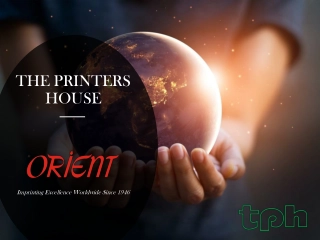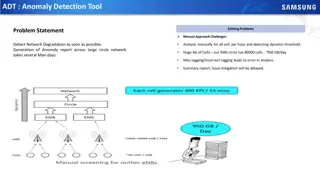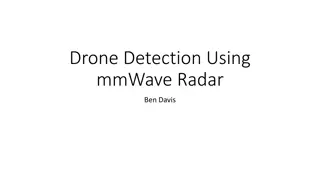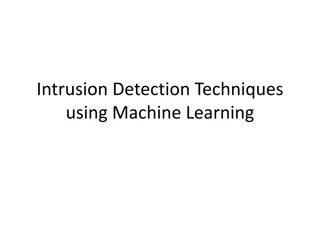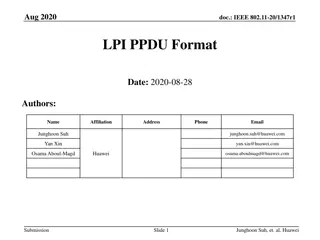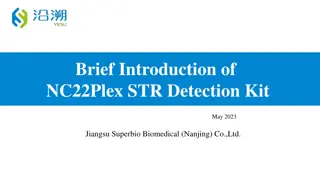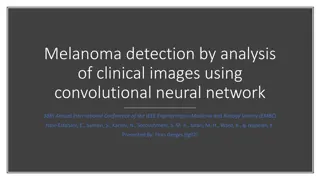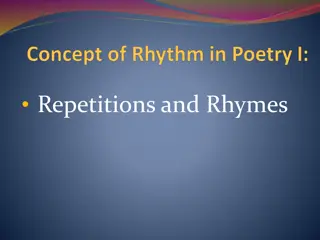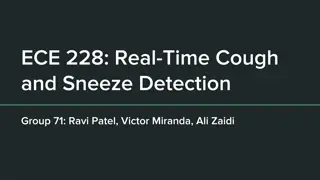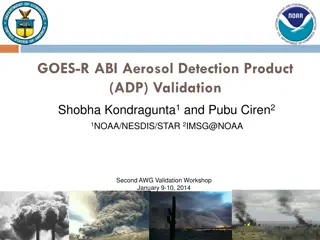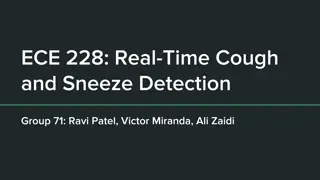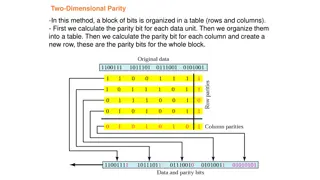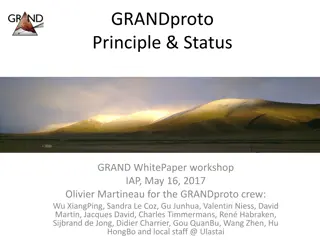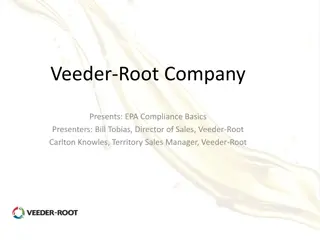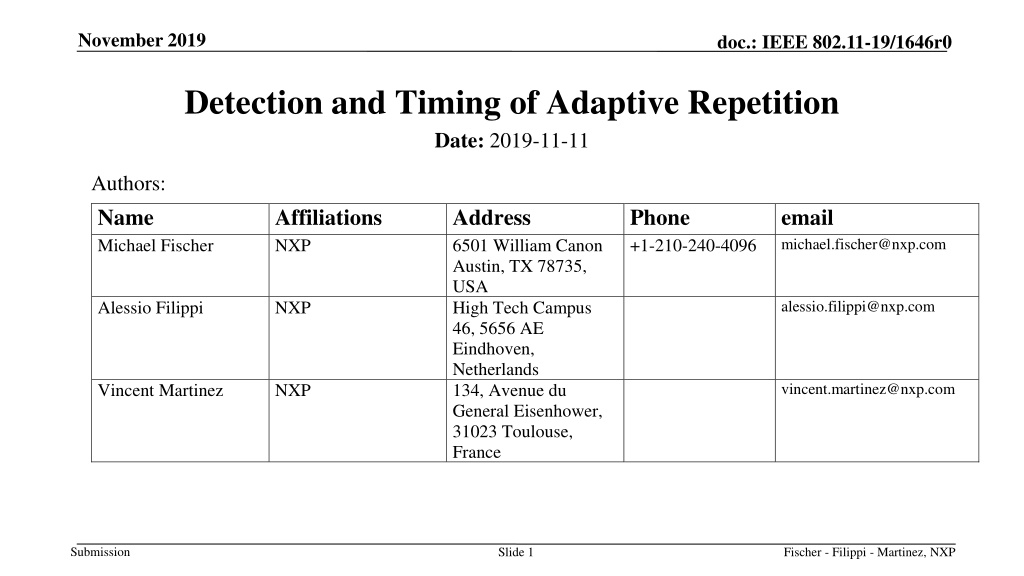
Understanding IEEE 802.11 Adaptive Repetition Feature
Learn about the adaptive repetition feature in IEEE 802.11, its benefits, performance gains, and technical details. This feature enhances message reliability and efficiency for 802.11p and NGV stations, providing a performance boost with minimal software updates and natural message filtering.
Download Presentation

Please find below an Image/Link to download the presentation.
The content on the website is provided AS IS for your information and personal use only. It may not be sold, licensed, or shared on other websites without obtaining consent from the author. If you encounter any issues during the download, it is possible that the publisher has removed the file from their server.
You are allowed to download the files provided on this website for personal or commercial use, subject to the condition that they are used lawfully. All files are the property of their respective owners.
The content on the website is provided AS IS for your information and personal use only. It may not be sold, licensed, or shared on other websites without obtaining consent from the author.
E N D
Presentation Transcript
November 2019 doc.: IEEE 802.11-19/1646r0 Detection and Timing of Adaptive Repetition Date: 2019-11-11 Authors: Name Michael Fischer Affiliations NXP Address 6501 William Canon Austin, TX 78735, USA High Tech Campus 46, 5656 AE Eindhoven, Netherlands 134, Avenue du General Eisenhower, 31023 Toulouse, France Phone +1-210-240-4096 email michael.fischer@nxp.com alessio.filippi@nxp.com Alessio Filippi NXP vincent.martinez@nxp.com Vincent Martinez NXP Submission Slide 1 Fischer - Filippi - Martinez, NXP
November 2019 doc.: IEEE 802.11-19/1646r0 Abstract Adaptive repetition feature (document 11-19-1055) was presented in July. Both simulation results and measured results from implementation on commercial HW have been demonstrated. The live-running adaptive-repetition demo was shown during ITS WC 2019 in Singapore. The adaptive repetition feature passed motion. The goal of this present submission is to address some technical details left open by the motion. Submission Slide 2 Fischer - Filippi - Martinez, NXP
November 2019 doc.: IEEE 802.11-19/1646r0 Adaptive Repetition Summary (1) Adaptive message repetition is a simple, efficient, and reliable technique. It was initially described in submissions NGV 11-18-1577 and 11-18/1186 , and further elaborated in 11-19-1055. It is fully backword compatible It provides performance gain for 802.11p stations as well ad NVG stations. Submission Slide 3 Fischer - Filippi - Martinez, NXP
November 2019 doc.: IEEE 802.11-19/1646r0 Adaptive Repetition Summary (2) Legacy IEEE 802.11p stations see each retransmission as a standalone message Performance validated on real HW (1 to 2 dB) due to temporal diversity Duplicated messages naturally filtered by application (already performed by higher protocol layers) No software update needed Initial PPDU and retransmissions can be combined by NGV stations, either when sent in legacy IEEE 802.11p or new format NGV mode +4 dB performance boost for 1 retransmission +7 dB performance boost for 3 retransmissions Submission Slide 4 Fischer - Filippi - Martinez, NXP
November 2019 doc.: IEEE 802.11-19/1646r0 Adaptive Repetition Summary (3) The recommended approach sends the repetitions as a burst, separated by a small time gap, typically set as SIFS (32 sec) Submission Slide 5 Fischer - Filippi - Martinez, NXP
November 2019 doc.: IEEE 802.11-19/1646r0 Adaptive Repetition Summary (4) Adaptive Retransmission Control: exemplary control schemes (done at upper layers, e.g. 1609) The number of retransmissions can be gradually increased as the occupancy of the channel goes down. In congested environment (high CBR), retransmissions are disabled. Exemplary schemes for controlling the number of repetitions: Hard steps Recommended method, but open for discussion Measured CBR Number of Rep. Traffic increase for this transmitter Average number of transmissions 0 No increase in traffic 0.3 [0.2 0.3[ 1 x2 [0.15 0.2[ 2 x3 < 0.15 3 x4 Submission Slide 6 Fischer - Filippi - Martinez, NXP
November 2019 Performance Demonstrated on Real Commercial IEEE802.11p/bd HW: setup doc.: IEEE 802.11-19/1646r0 Rx Cable EVK 11p PRR 11bd Repeat Tx Legacy 11p receiver (no modifications) 1. No repetition: 11p performance 2. Repetition: slight performance increase (~0.5 dB) 11p Legacy Repeat attenuator EVK 11p/bd 11p Legacy 11p/bd Transmitter 1. No repetition: 11p mode 2. Repetitions: 11bd mode 11bd Rx Rx 11bd Tx EVK 11bd 11p Rx Legacy Submission Slide 7 Fischer - Filippi - Martinez, NXP
November 2019 doc.: IEEE 802.11-19/1646r0 Live running demo at ITS WC Singapore, October 2019 Submission Slide 8 Fischer - Filippi - Martinez, NXP
November 2019 doc.: IEEE 802.11-19/1646r0 FRD&SFD Motion #19 (copied from 11-19-0514r9) Move to include the following text to section 3 in 11bd SFD 11bd shall support adaptive repetition of 11p PPDU when operating on OCB broadcast mode in 10MHz bandwidth. The signaling of the adaptive repetition is TBD. The time between repeated 11p PPDUs is TBD. Mover: James Lepp Second: Dongguk Lim Result: 16Y/0N/11A Submission Slide 9 Fischer - Filippi - Martinez, NXP
November 2019 doc.: IEEE 802.11-19/1646r0 Follow-up on: The time between repeated 11p PPDUs is TBD (1) There are several alternatives for the time gap between repeated PPDUs: The recommended approach by NXP is to send the repetitions as a burst, separated by a small time gap, typically set as SIFS (32 sec) SIFS is the minimum gap that maintains interoperability with 802.11p stations, although measurements on commercial IEEE 802.11p device indicate smaller values possible Time gap should be lower than the min AIFS (58 sec), to avoid other messages sent in between Each PPDU burst looks like a single transmission to CCA at other stations within range Experiments on commercial HW show that 32 sec is a safe sweet spot. Submission Slide 10 Fischer - Filippi - Martinez, NXP
November 2019 doc.: IEEE 802.11-19/1646r0 Follow-up on: The time between repeated 11p PPDUs is TBD (3) 100,00% NGV 11bd Device PHY: 11p Legacy Device: All Packets Not ready for the next packet MAC: 11p Legacy Device: Unique Packets 10,00% Arbitration Collisions in between repetitions PER 1,00% 0,10% 0 8 16 24 32 40 48 56 64 72 80 88 96 104 Repetition Gap [us] minAIFS + 1Slots = 71[us] minAIFS + 2 Slots = 84[us] minAIFS = 58 [us] SIFS Submission Slide 11 Fischer - Filippi - Martinez, NXP
November 2019 doc.: IEEE 802.11-19/1646r0 Follow-up on: The signaling of the adaptive repetition is TBD (1) There are several alternatives for the signaling / recognition of adaptive repetitions. The recommended approach by NXP is to: Not use any signaling (100% compatible with legacy stations, zero performance loss) Keep the repetitions identical to the initial message. Implicit signaling & repetition detection at the NGV receiver is robust enough Submission Slide 12 Fischer - Filippi - Martinez, NXP
November 2019 doc.: IEEE 802.11-19/1646r0 Follow-up on: The signaling of the adaptive repetition is TBD (2) Robust repetition detection at the NGV receiver can be performed, for example but not limited to, by means of: Time gap measurement (time between successive received packets) Signal Field symbol Resemblance (not enough by itself, but brings information) Resemblance metric between successive received packets (example: EVM metric at equalized constellation level) Combinations of the above Submission Slide 13 Fischer - Filippi - Martinez, NXP
November 2019 doc.: IEEE 802.11-19/1646r0 Follow-up on: The signaling of the adaptive repetition is TBD (3) Exemplary scheme for repetition detection based on implicit timing gap measurement: New Packet When a new packet is acquired, measure the time gap from end of previous packet: GAP. Calculate TO Calculate GAP Previous END threshold If T0 is within interval [32-delta:32+delta], consider it as a repetition from previous packet. Recommendation for delta is a very small value like 1 sec. no repetition?yes Previous CRC ok Store END CRC? error Decode Standalone Decode Combined Previous packet error ok CRC? Store END Store CRC status Store Encoded Packet Store END Store CRC status Submission Slide 14 Fischer - Filippi - Martinez, NXP
November 2019 doc.: IEEE 802.11-19/1646r0 Follow-up on: The signaling of the adaptive repetition is TBD (4) Exemplary scheme for detection based on implicit resemblance metric: 2 ???? ?=0 ?????????????? ???????,? ????????? ???????,? ?=0 ??? = 2 ???? ?=0 ?????????????? ???????,? ?=0 Fischer - Filippi - Martinez, NXP Submission Slide 15
November 2019 doc.: IEEE 802.11-19/1646r0 Follow-up on: The signaling of the adaptive repetition is TBD (5) Repetition detection simulations based on implicit resemblance metric: First, PER simulations are run Secondly, missed detection & false alarm simulations are run Repetitions: detection performance, using 5 OFDM symbols 2 ???? ?=0 ?????????????? ???????,? ????????? ???????,? ?=0 ??? = 2 ???? ?=0 ?????????????? ???????,? ?=0 Very few OFDM DATA symbols (e.g. 5) are required to get a good enough resemblance indicator ( 1% false alarm & missed detection) at target SNR levels Minor memory, processing and latency impact at NGV receiver side Identify SNR levels for 10% PER: 0.6 and 2.4 dB Fischer - Filippi - Martinez, NXP Submission Slide 16
May 2019 doc.: IEEE 802.11-19/1646r0 Conclusions We address two open points on a previously accepted motion 1. The signaling of the adaptive repetition is TBD We recommend not to signal the adaptive repetition to maintain the backward compatibility with 11p and because it s implicitly signaled 2. The time between repeated 11p PPDUs is TBD We recommend to set this gap as SIFS (32 sec) Submission Slide 17 Fischer - Filippi - Martinez, NXP
May 2019 doc.: IEEE 802.11-19/1646r0 Straw poll #1 Would you agree to set refine motion #19 on adaptive repetition with the following text: The signaling of the adaptive repetition is not required" Submission Slide 18 Fischer - Filippi - Martinez, NXP
May 2019 doc.: IEEE 802.11-19/1646r0 Straw poll #2 Would you agree to refine motion #19 on adaptive repetition with the following text: The time between repeated 11p PPDUs is equal to the SIFS time (32 us). Submission Slide 19 Fischer - Filippi - Martinez, NXP

